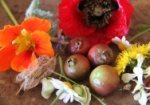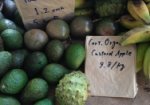This Sunday 11 October, Vaucluse House is celebrating its 100th anniversary as a house museum with a free community open day. It’s also the 15th birthday of our recreated Victorian kitchen garden – and it’s never looked better! Amid the spring abundance you’ll find heirloom tomatoes, tender sugar-snap peas and colonial favourites like white icicle radishes, sugar-loaf cabbages and salsify.
A lost garden – restored
When William Charles Wentworth bought Vaucluse estate in 1827, there were ‘two large Gardens … well stocked with Fruit Trees and containing a choice selection of Plants’. These were likely those originally planted by the estate’s first European owner, Sir Henry Browne Hayes, between 1803 and 1812.
While today we think of a ‘garden’ as being a cultivated, decorative area, in the 1800s it typically meant a productive garden; the 1827 description likely refers to an orchard and a kitchen garden. By the time the Wentworth family left Vaucluse in 1862, to reside again in Europe, their 515-acre estate boasted vineyards, an orangery, a banana plantation, greenhouses and prize-winning pineapples as well as peaches, custard apples and melons.
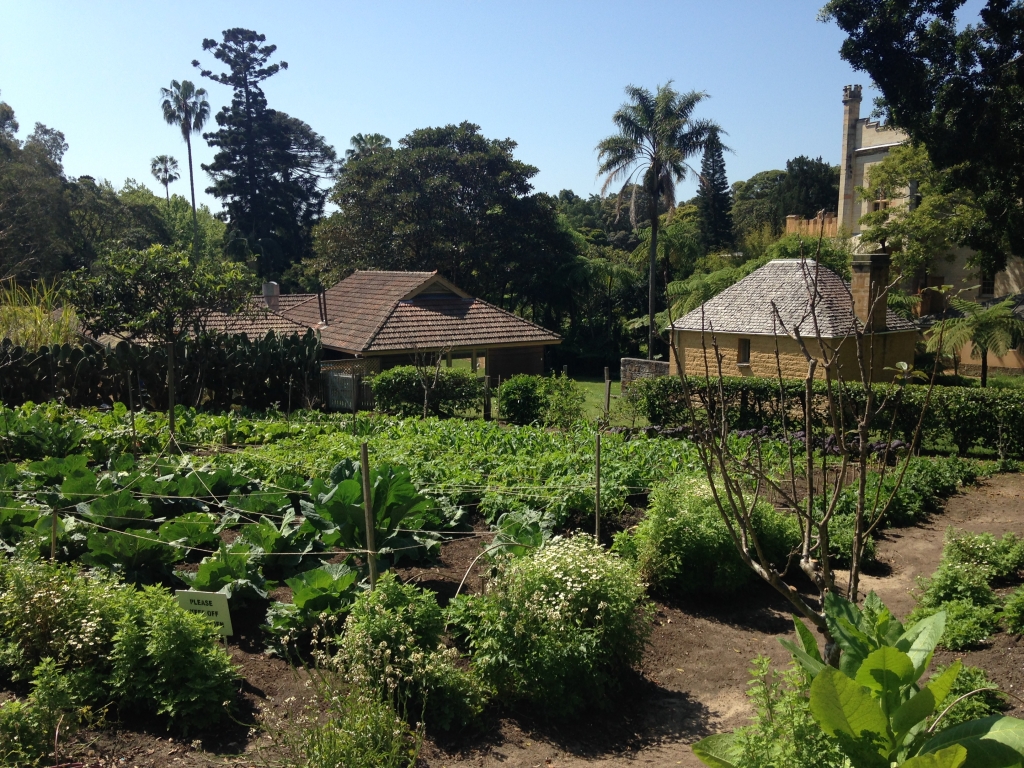
The kitchen garden at Vaucluse House, October 2015. Photo Helen Curran © Sydney Living Museums
Though visitors today are struck by the size and bounty of Vaucluse House’s kitchen garden – it covers about a third of a hectare – it’s just a fraction the size of the original productive garden, which kept the entire household and working estate in food and feed. Unusually, all 10 of the Wentworth children survived childhood. Could the abundance of green leafy vegetables and fresh fruit have contributed to this exceptional good luck?
By the 1880s the kitchen garden was in decline. And while the Wentworths’ ornamental pleasure garden survived the 20th century remarkably intact, all remaining traces of the garden that had once produced ‘the most delicious fruit in the colony’ were lost … until 1999, when the Historic Houses Trust launched a project to recreate it. The kitchen garden opened in 2000, and is a much-loved part of any visit to Vaucluse House.
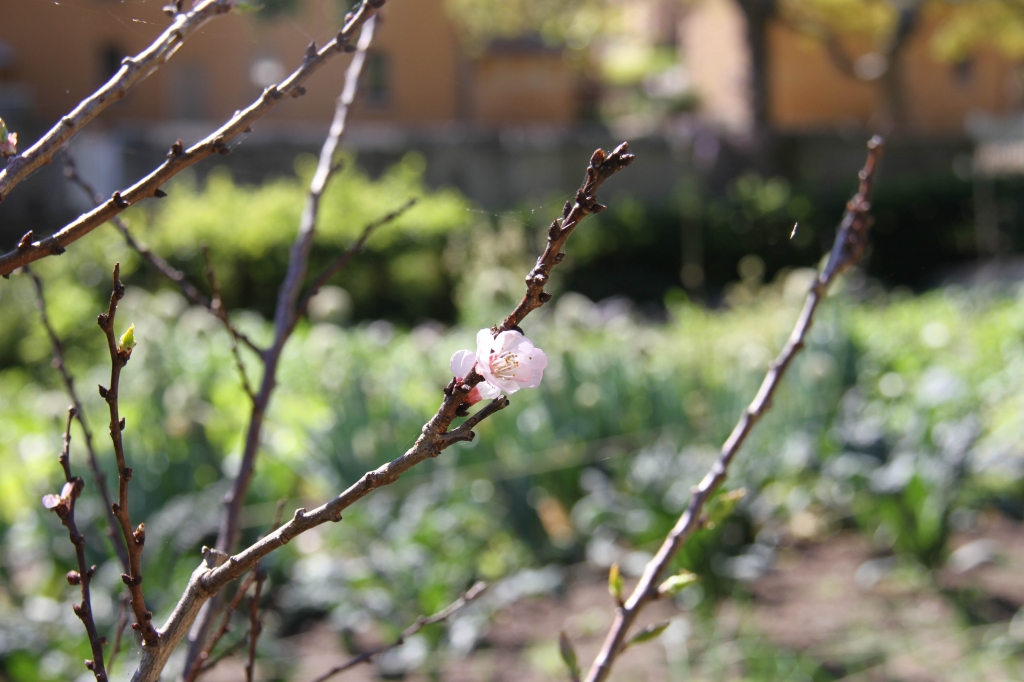
Fruit tree in blossom in the kitchen garden at Vaucluse House. Photo Helen Curran © Sydney Living Museums
In good hands
Today, the kitchen garden is tended by the Sydney Living Museums Gardens team and volunteers, under the watchful eye of horticulturist Anita Rayner. (You can follow Anita on Instagram here.) Anita’s seen seven springs come to the sunny slope bounded by bush lemon and prickly pear. I caught up with her there last week, on a beautiful early October afternoon. ‘It’s like working in paradise,’ she says, and on a day like this it’s easy to see why.

Anita Rayner in the kitchen garden at Vaucluse House. Photo © Haley Richardson and Stuart Miller for Sydney Living Museums
In April this year, the kitchen garden was shredded by the hail storms that pummelled Sydney. Over the winter, Anita and her team have brought it back from ground zero – and it’s looking absolutely fantastic. The bees are in the borage, the pomegranate’s flowering electric orange, and dozens of varieties of heirloom vegetables fill the well-tended beds.
The newest seedlings went in last Monday – purple and white Vienna kohlrabi, and tomatoes: bull’s-heart, yellow pear and costoluto di marmande. Will they be OK? I ask, mindful of the blasting temperatures forecast for the weekend. Yes, Anita assures me. ‘I’ll water them today and tomorrow, and then it’s just a matter of every plant for itself. They’re always alive when we get back in on Monday – or mostly.’
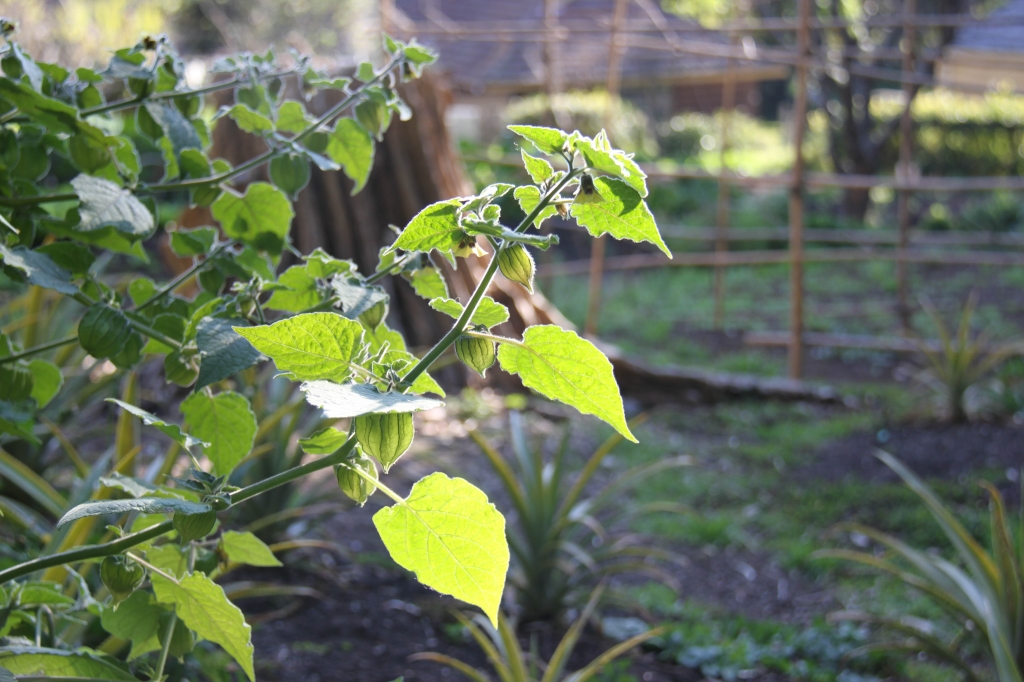
Cape gooseberries in the kitchen garden at Vaucluse House. Photo Helen Curran © Sydney Living Museums
Below you can read Anita’s thoughts about working in a Victorian kitchen garden and discover some of the spring produce you’ll see if you drop by. Do come along this Sunday from 11am to 4pm! Anita will be on hand to answer your questions and talk soil, seedlings and sustainability with aspiring and established green thumbs alike.
On this year’s bumper crops
For the last three years the peas haven’t done very well here, or the sweet peas in the pleasure garden. This year they’ve actually been quite vigorous and have produced a lot of fruit. The potatoes look amazing and like they’re going to be very prolific.
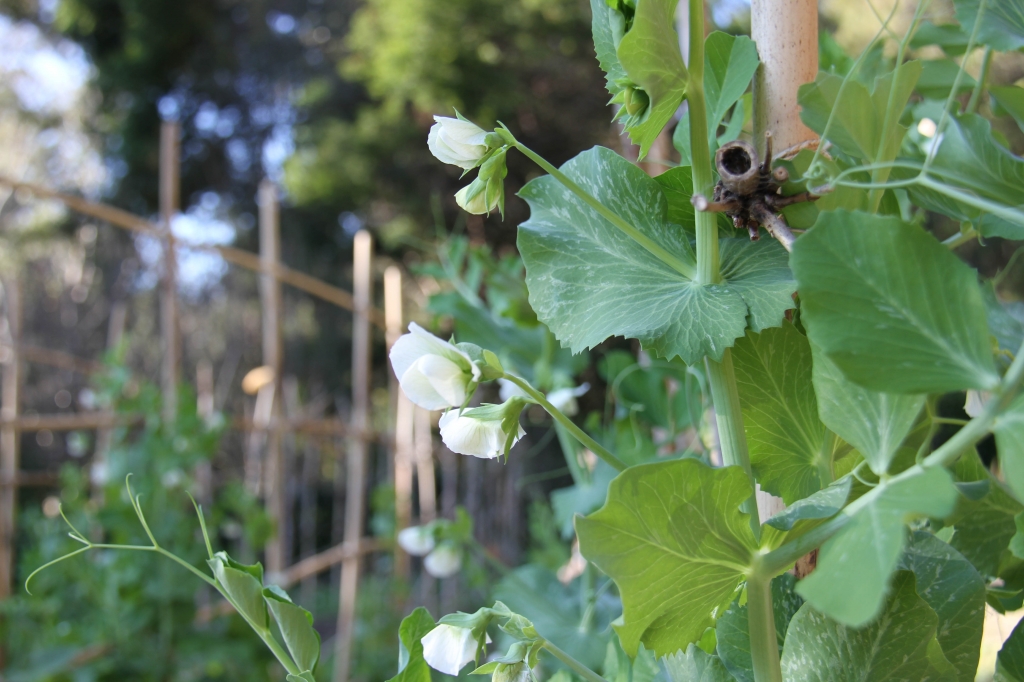
Sugar-snap peas in the kitchen garden at Vaucluse House. Photo Helen Curran © Sydney Living Museums
On organic gardening
We don’t spray chemicals in the kitchen garden. Personally I don’t like doing it. We make our own compost, and we buy it in because we can’t generate enough of it here. It goes very quickly because the sand eats it up. It degenerates in the sand so quickly that by the time whatever you put in it to grow has finished its cycle it’s sand again. It’s amazing what you can grow in sand.

Celery seedlings in the kitchen garden at Vaucluse House. Photo Helen Curran © Sydney Living Museums
On the best thing she’s cooked from the garden
Fresh potatoes. There’s just no comparison to the two-year old thing you buy at the supermarket, or however old it is. They’re just delicious. Everyone commented on them last time. Steamed with butter and pepper and salt, that’s the best way. We usually grow pink firs, an heirloom variety, but they’re very hard to source. This year it’s kipflers – Aggie the volunteer got them at the Flemington markets. They’ve just started to die back and go yellow. When they’ve all died back, that’s when you dig them up.
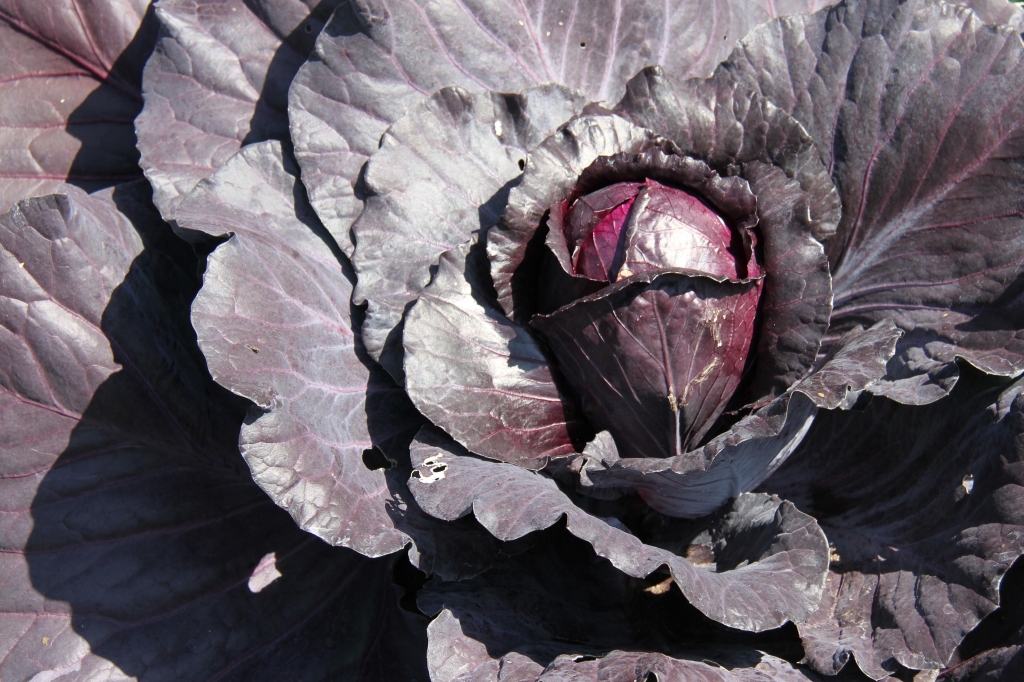
Red Dutch cabbage in the kitchen garden at Vaucluse House. Photo Helen Curran © Sydney Living Museums
On how visitors respond
I think people want to see nice, fat, healthy produce as it’s really grown, not sitting on a supermarket shelf. And things that they’ve never seen before too, like white radishes and purple carrots and giant red mustard and salsify.
People do marvel at the variety, because I make sure I write the different varieties on the line markers. They don’t know there are hundreds of different tomatoes and hundreds of different cabbages and potatoes and corn and everything. I had a choice of maybe seven or eight different types of chard, but I chose this one because the kids love it, they love the rainbow colours.
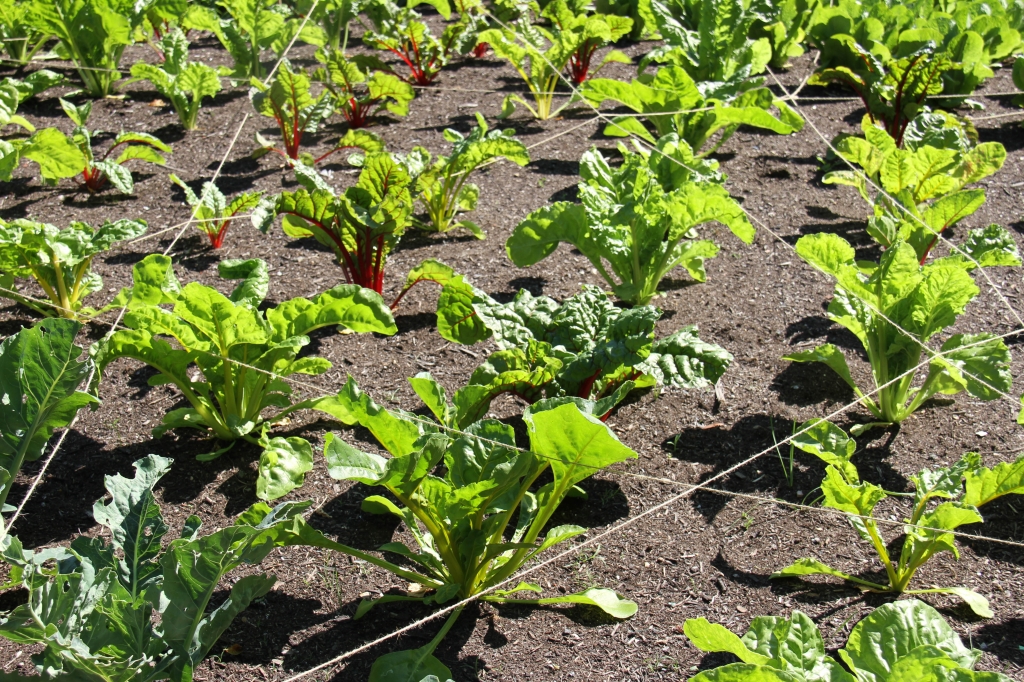
‘Anti-cockatoo devices’ around the rainbow chard at Vaucluse House. Photo Helen Curran © Sydney Living Museums
On what the garden has taught her
From the perspective of it being a Victorian kitchen garden, and not growing anything that was introduced after 1850 – give or take – you realise how many things have been taken off our palate of choice because of shelf life. And how delicious things are that aren’t stored in a cool room for a year. The potatoes. The tomatoes.
On respecting what we eat
I’ve learned that we pay far too little for our food. These onions for example: six months to even form something that resembles an onion, and yet they’re so cheap! How is that? That purple Sicily cauliflower – the effort it’s taken to grow, it should cost about $40. And we would eat it all, we wouldn’t waste a single part of it! Everything’s so disposable and cheap … and I’ve had to fight just to keep the caterpillars off the kale.
When I realised how much work goes into making this small patch of things stay alive, and getting them to the point where you can actually pick them and eat them, then I think we don’t respect our food enough.
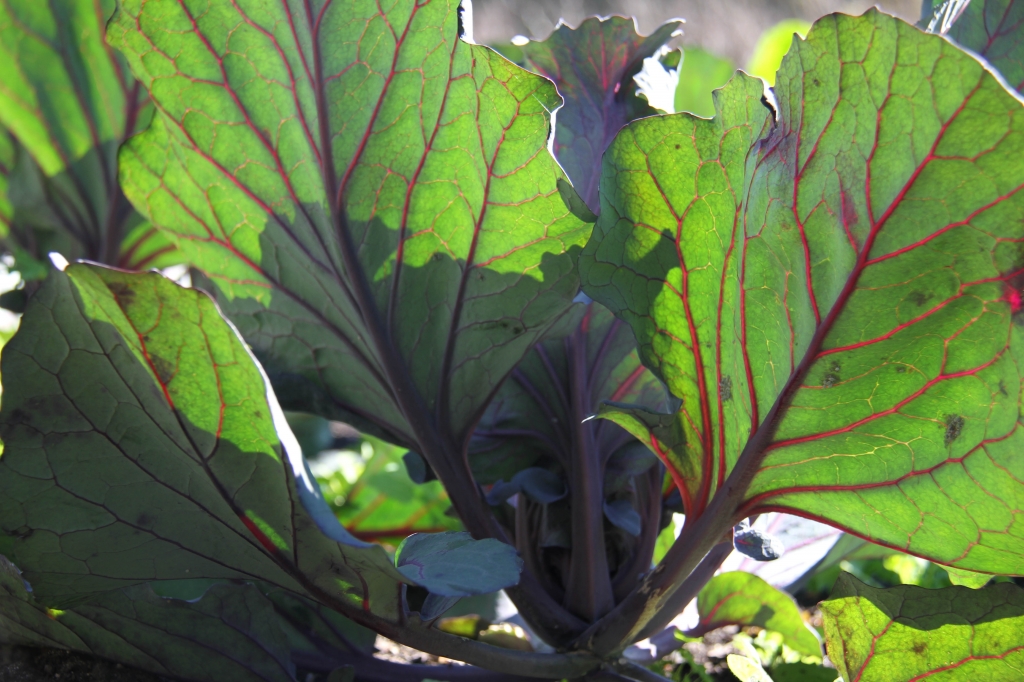
Red Dutch cabbage in the kitchen garden at Vaucluse House. Photo Helen Curran © Sydney Living Museums
On sharing the bounty
The staff take it, I’ll offer it to volunteers every fortnight when they come, any locals who come through the garden and express an interest in it, I’ll offer it to them. Obviously people are helping themselves at the moment, if the silverbeet’s anything to go by. I almost want to put up a sign saying, If you’re going to take the produce, could you please use secateurs? They’re just tearing leaves off, leaving the stump – the naked stalk!
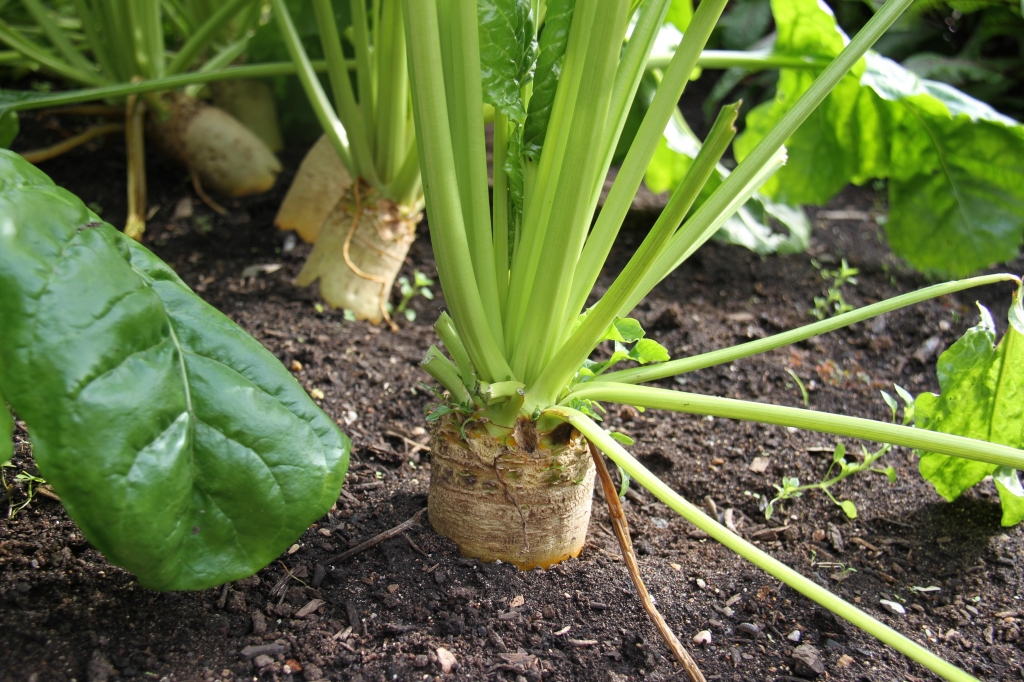
Sugar beets in the kitchen garden at Vaucluse House. Photo by Helen Curran © Sydney Living Museums
On changing tastes
I like to choose things that I’ve never tried to grow before. There are rock melons with big, warty lumps all over them that taste disgusting, but at one point someone thought they were delicious, and they were exotic.
There’s an important Victorian rock melon called Jenny Lind, and it’s truly inedible. I’ve tried so many things. I’ve tried looking after it with a little bit of extra fertiliser and lots of water and, no, nothing can make it not awful. It tastes like gas – like a turnip, only a fruit version. It has a bitter sweetness I can’t even describe.
Now there’s things like the goji berry … that’s not even new anymore, that’s old. They all come from South America – the newest, latest fruit fad. But the medlar’s never come back. Because that is disgusting.
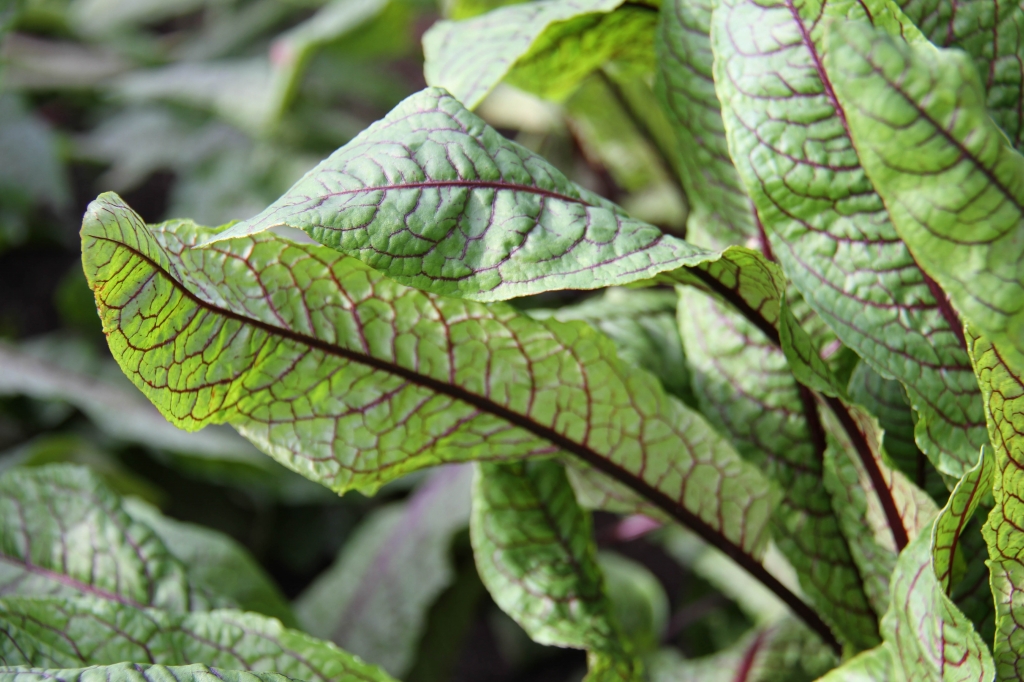
Red-veined sorrel in the kitchen garden at Vaucluse House. Photo Helen Curran © Sydney Living Museums
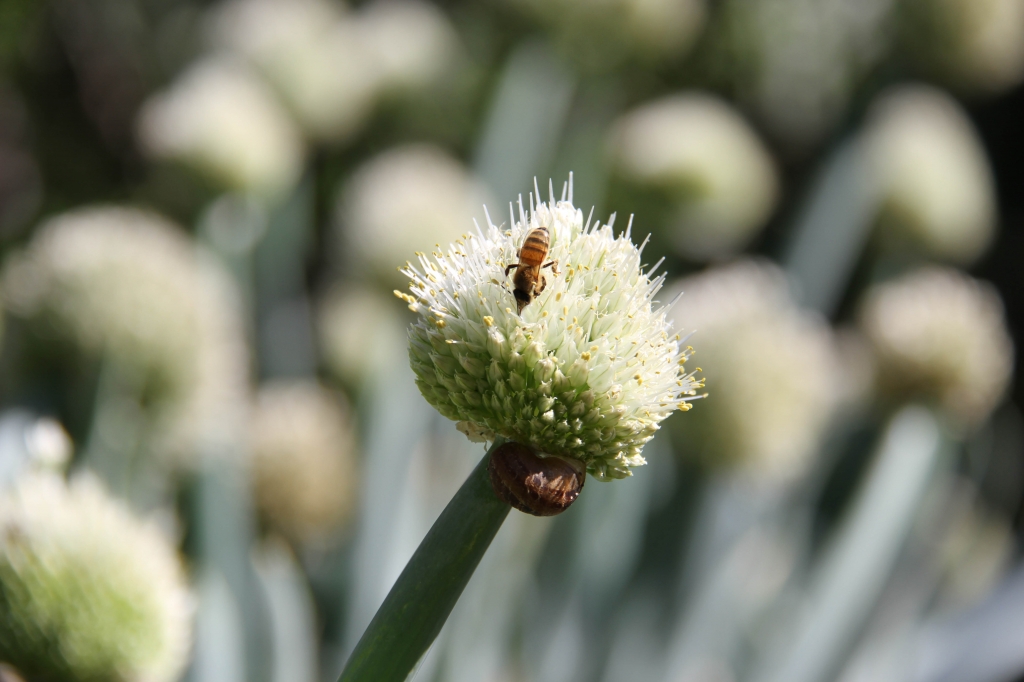
A bee takes pollen from a spring onion in the kitchen garden at Vaucluse House. Photo Helen Curran © Sydney Living Museums
On hard work and satisfaction
It’s a lot of hard work having a kitchen garden and keeping it full requires someone being here, if not every day, then at least every other day. Just sowing seed in the glasshouse or direct sowing root vegetables – carrots and beetroot and parsnips and turnips – and just keeping on top of the weeds so that it looks cared for.
I really do have this sense of ownership of the kitchen garden, rightly or wrongly, because you’re really connected to what you’re planting, and whether it’s successful or not. There’s a learning process of not doing something again, if it’s not successful, and doing it a different way.
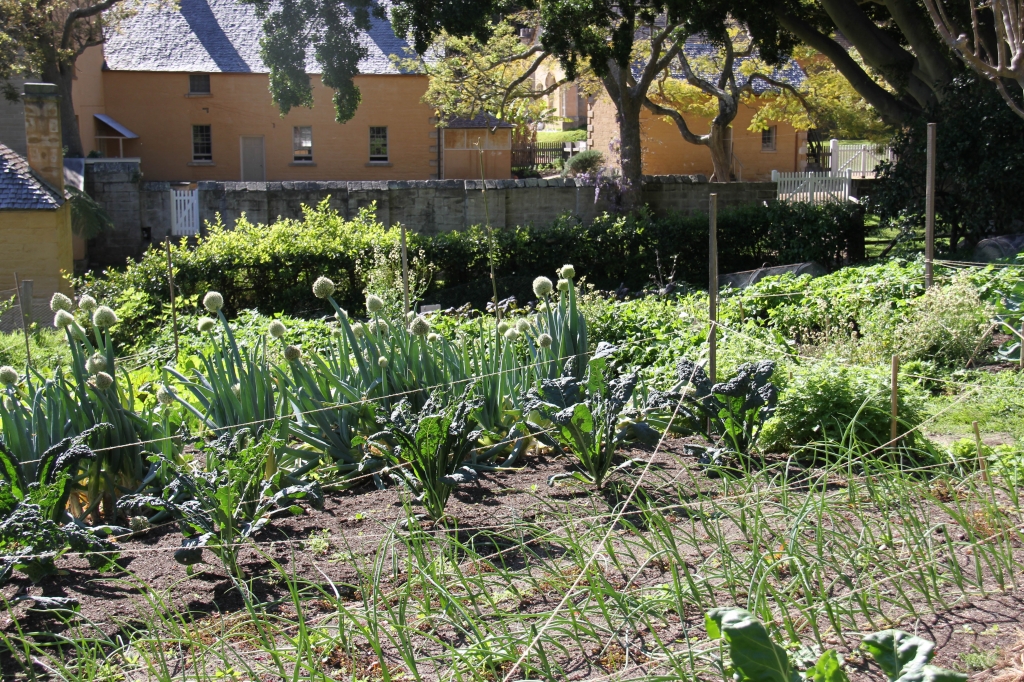
The kitchen garden at Vaucluse House. Photo Helen Curran © Sydney Living Museums
—Guest blogger Helen Curran is an assistant curator at Sydney Living Museums

